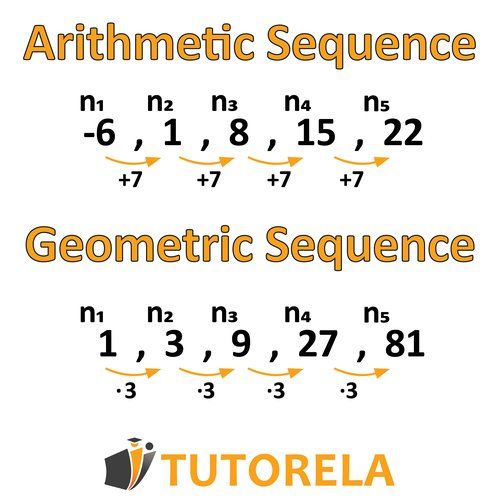Frequently Asked Questions
Everything you need to know about Series / Sequences
How do you find the pattern in a sequence?
+ To find a sequence pattern, examine the difference or ratio between consecutive terms. For arithmetic sequences, look for a constant difference (like +3 or -2). For geometric sequences, look for a constant ratio (like ×2 or ÷4). Practice with examples like 2, 4, 8, 16 (multiply by 2) or 6, 4, 2, 0 (subtract 2).
What is the difference between arithmetic and geometric sequences?
+ Arithmetic sequences use addition or subtraction with a constant difference between terms (example: 1, 3, 5, 7 adds +2). Geometric sequences use multiplication or division with a constant ratio (example: 3, 9, 27, 81 multiplies by 3). Understanding this difference is key to solving sequence problems correctly.
How do you solve sequence word problems step by step?
+ Follow these steps: 1) Write out the given terms in order, 2) Find the pattern by checking differences or ratios, 3) Verify the pattern works for all given terms, 4) Apply the rule to find missing terms, 5) Double-check your answer. Practice makes perfect with sequence problem solving.
What are the most common sequence patterns in math?
+ The most common patterns include:
• Arithmetic: constant addition/subtraction (2, 5, 8, 11)
• Geometric: constant multiplication/division (4, 12, 36, 108)
• Fibonacci: sum of previous two terms (1, 1, 2, 3, 5, 8)
• Square numbers: 1, 4, 9, 16, 25
• Powers: 2, 4, 8, 16, 32
How do you find missing terms in a sequence?
+ First identify the sequence rule by examining given terms. Then apply the rule systematically to fill gaps. For example, in the sequence 5, __, 17, 23, find the difference (6) and calculate the missing term: 5 + 6 = 11. Always verify your answer fits the overall pattern.
What is the Fibonacci sequence and how does it work?
+ The Fibonacci sequence starts with 1, 1, then each following number is the sum of the two previous numbers: 1, 1, 2, 3, 5, 8, 13, 21, 34... The rule is: F(n) = F(n-1) + F(n-2). This famous sequence appears in nature and has many mathematical applications.
Why are sequence problems important in mathematics?
+ Sequence problems develop pattern recognition skills essential for algebra, calculus, and real-world problem solving. They teach logical thinking, help students understand mathematical relationships, and prepare them for advanced topics like functions and series. Mastering sequences builds a strong foundation for higher mathematics.
What are some tips for solving difficult sequence problems?
+ Try these strategies: 1) Look for multiple operation patterns (add then multiply), 2) Check if terms follow formulas like n², 2ⁿ, or factorials, 3) Consider alternating patterns or signs, 4) Work backwards from known terms, 5) Draw diagrams when helpful, 6) Practice regularly with various sequence types to build recognition speed.
